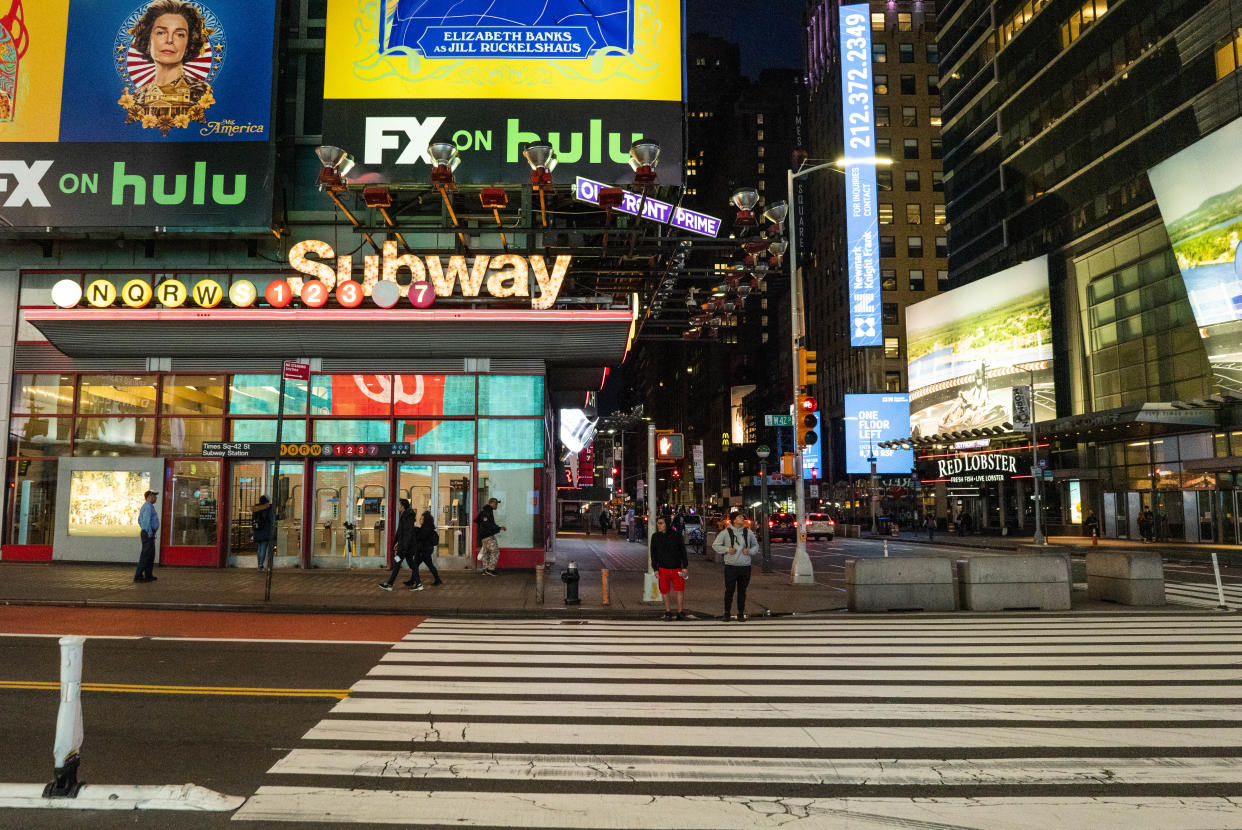Lockdown lowered COVID-19 infection rates in NYC by 70%, says study

Lockdown reduced the spread of COVID-19 in New York City by 70 percent, according to a forthcoming study.
For the study, scientists at Columbia University Mailman School of Public Health and the New York City Department of Health and Mental Hygiene looked at how successful public health interventions — such as school closures, stay-at-home orders and face masks — were on the widespread COVID-19 transmission rates happening in the city from March until its “reopening” in June. The scientists found that these measures were highly effective at reducing coronavirus infection rates.
In fact, the success rate of New York City’s lockdown was even higher than what was seen in Wuhan, China. According to the Columbia University press release, “the new study is in line with previous modeling studies estimating that lockdowns reduced COVID-19 transmission by 58 percent in Wuhan, China, 45 percent in Italy, and 77 in France.”
“New York’s response is the closest thing we’ve seen to how other countries have responded, and that’s why it was so effective there and in other countries,” Dr. Iahn Gonsenhauser, chief quality and patient safety officer at the Ohio State University Wexner Medical Center, tells Yahoo Life.
While stay-at-home orders had the most significant results, researchers also found that widespread use of face masks helped by reducing infection rates by an additional 7 percent. The reduction rates were even higher for older adults — up to 20 percent among those 65 and older during the first month that face masks were required in public places — who appear to be better about wearing face masks.
However, experts aren’t surprised by the report’s findings. “I don’t think too many people in health care are going to be surprised with this finding or even how significant the reduction is attributed to the lockdown,” says Gonsenhauser. “We all recognize that this is all about contact. Viral spread is all about people coming into contact with one another.”
Since the virus spreads mainly through in-person contact, “when you have a lockdown, everyone stays at home and you pretty much shut down the majority of human contact,” the study’s lead author, Wan Yang, an assistant professor in the department of epidemiology at Columbia University Mailman School of Public Health, tells Yahoo Life.
The other reason lockdowns work is that they’re typically mandatory. “It’s that lack of option that makes it so effective,” says Gonsenhauser. “There are a lot of people who are going to choose not to do the right thing, and this makes it not a choice.”
The report also found that wearing masks makes a difference: If the current rates of mask-wearing in New York City continue as more people spend time outside, that can help “reduce overall COVID-19 transmission by approximately 9 to 11 percent during reopening,” according to the press release. However, “if we’re able to get the entire population to wear face masks” — more along the lines of what older adults have been doing — “we would be able to hopefully reduce the transmission for the entire population up to around 30 percent,” says Yang. “That is very substantial in reducing transmission.”
Yang adds that wearing a mask shouldn’t be “political.”
“It’s for our own health,” she says. “And for the protection of our neighbors and our community. It should be every citizen’s responsibility. Everyone should do their part to contribute to the best outcome.”
While there’s no question that lockdowns are effective, Dr. Amesh A. Adalja, a senior scholar at the Johns Hopkins Center for Health Security, tells Yahoo Life that they’re like a “blunt tool” that was only used because “New York City was in a crisis.”
Experts acknowledge that lockdowns aren’t sustainable. “This has a real cost on people’s lives, and you have to think long-term,” says Adalja.
Adds Yang: “We know for sure that lockdown is very effective in terms of curbing transmission. The problem is we can’t do lockdown all the time. [The question is] how can we safely reopen? I entirely understand the struggle of businesses [during lockdown]. But if we open up and we get another huge increase in cases, in infections, we not only risk everyone’s lives, but we [also] won't be able to open businesses as well.”
As Gonsenhauser puts it: “If you don’t put the fire out and it continues to smolder, it’s going to burn again.”
However, experts agree there are have several tools in the public’s arsenal that continue to help fight the spread of the coronavirus without having to go into lockdowns. Along with testing and contact tracing, they include “social distancing, staying six feet apart from people, wearing a face covering when you can’t social distance [and] good hand hygiene — all of these are important tools,” says Adalja.
As Yang stated in the press release: “We need to implement all of those simultaneously in order to effectively mitigate the spread of COVID-19.”
For the latest coronavirus news and updates, follow along at https://news.yahoo.com/coronavirus. According to experts, people over 60 and those who are immunocompromised continue to be the most at risk. If you have questions, please reference the CDC’s and WHO’s resource guides.
How to maintain your physical and mental health during the pandemic
Taking care of a loved one with COVID-19? Here’s how to stay healthy
Q&A with Dr. Kavita Patel: How to keep your family safe and maintain your mental health
Read more from Yahoo Life:
How remote learning is revealing a digital divide: 'Not all students have equitable access'
Sending your kids back to the classroom? Here's how experts advise keeping them safe.
Want lifestyle and wellness news delivered to your inbox? Sign up here for Yahoo Life’s newsletter.


